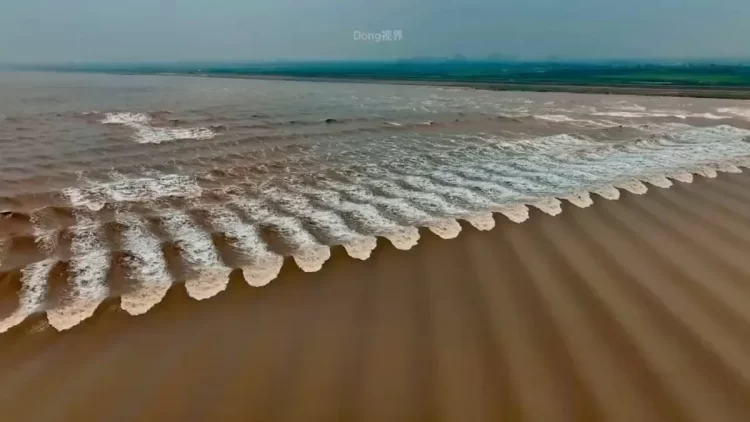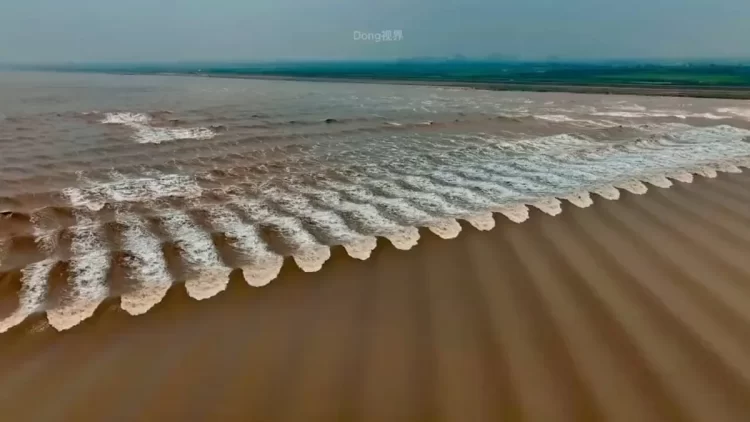China’s Qiantag River is famous for a unique natural phenomenon, a wavy pattern tide that was only observed for the first time in 2021 and has come to be known as fish scale tide.
The Qiantang River’s estuary in Zhejiang Province has long been famous for having the strongest tidal bores in the world. At times, they can get as tall as nine meters, which means the area regularly sees trains of large waves moving upstream against the normal current. However, in 2021, during a scientific expedition, researchers discovered another intriguing natural phenomenon unique to this estuary. When certain conditions are met, the tide comes in spiraling waves that look like fish scales on the water’s surface. The phenomenon hs become known as ‘fish scale tide’.

Because this unusual tide pattern was only observed a couple of years ago, the exact reason for its occurrence is apparently still up for debate. Different sources cite different reasons for the formation of the fish scale tide. For example, FyFluidDyamics believes that the phenomenon is the result of a series of factors.
“The area is also known to have rotating currents, meaning that the tide does not simply move inland and then smoothly reverse direction,” Nicole Sharp writes. “Instead, a rotating current can change its direction of flow over the course of a tidal cycle without changing its speed. Taken together, this makes the Qiantang River region perfect for winding up with groups of waves colliding at oblique angles, similar to a cross sea. Two sets of tidal-bore-induced waves are colliding at an angle, creating some gnarly conditions and a very cool pattern.”
According to INF News, which looks like the translated version of a Chinese website, astronomy, topography, and wind direction are the main factors that produce the fish scale tide. Apparently, the moon and sun play a big part in the phenomenon, as does the shape of the estuary – very narrow at the river mouth, but then very wide where it meets the sea.
Whatever the exact necessary conditions for the formation of the fish scale tide may be, one thing is for sure – they rarely occur at the same time, hence the rarity of the phenomenon.













